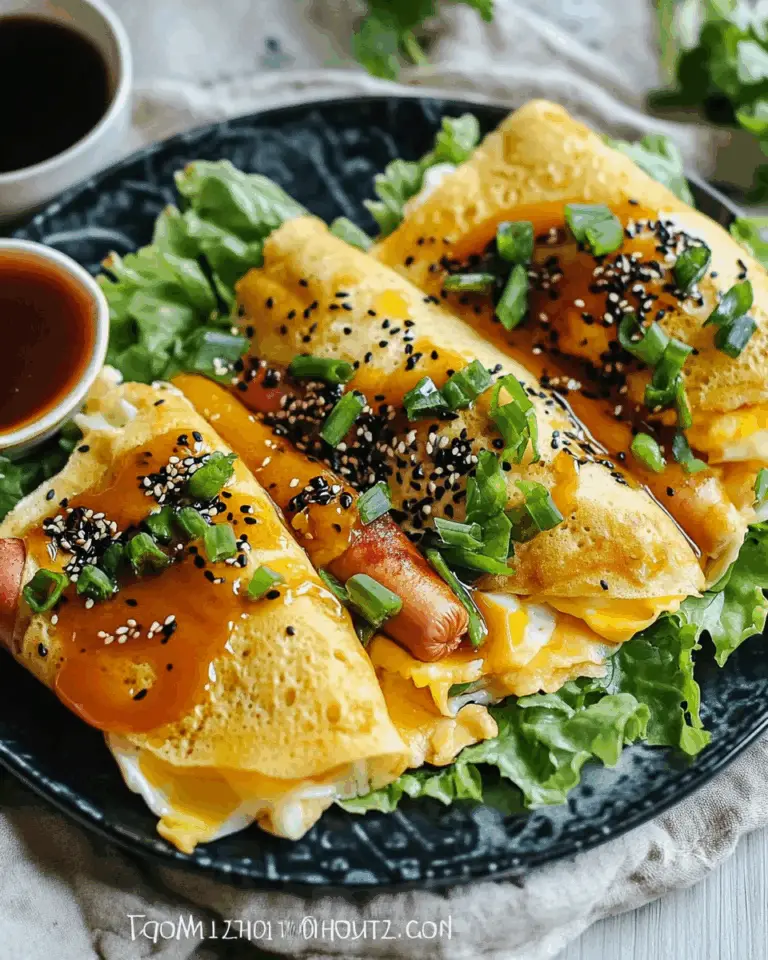Origins and Popularity of Ji Dan Bing
Ji Dan Bing originates from northern China, where wheat-based breakfast items like dumplings, buns, and pancakes dominate the morning scene. Translating to “egg pancake” in Mandarin, Ji Dan Bing is believed to have evolved from earlier forms of Chinese jianbing, another savory crepe traditionally made with mung bean or wheat flour and often more complex in structure.
The beauty of Ji Dan Bing lies in its simplicity and speed, making it perfect for busy mornings. In Chinese cities, locals often line up at carts before work or school to grab a freshly made Ji Dan Bing wrapped in wax paper, hot off the griddle. Its popularity continues to grow globally as more people fall in love with Asian street food flavors, seeking quick, savory options that go beyond Western-style breakfast fare.
The Base: Thin, Crispy Crepe with Just Enough Bite
The pancake base for Ji Dan Bing is somewhere between a French crepe and a tortilla in texture—thin enough to be flexible and rollable, but sturdy enough to hold fillings. Made with simple pantry staples like flour, water, and salt, the batter comes together in minutes and can be stored in the fridge for meal prep.
Once poured onto a hot, lightly greased skillet, the batter is spread thin and left to cook just until set before the egg is cracked on top. The underside becomes lightly golden and crisp, while the top stays tender—creating the perfect vessel for the soft egg and crunchy garnishes to follow.
The addition of a bit of oil (peanut oil is traditional, but butter or neutral oil works too) adds flavor and helps create those lightly crisped, browned edges that are a hallmark of a well-made Ji Dan Bing.
The Egg Layer: Protein, Color, and Flavor in One Step
As soon as the batter is set, a whole egg is cracked directly over the top and spread thinly using a spatula or chopsticks. This creates a cohesive egg layer that cooks right into the pancake, binding everything together and adding richness. The egg becomes a golden, delicate topping that not only adds protein but also visual appeal.
The egg layer is often sprinkled with sliced green onions and toasted black sesame seeds before it fully sets. These simple additions give Ji Dan Bing a boost of freshness, color, and nutty crunch. When flipped, the egg cooks just enough on the other side without overbrowning, ensuring a perfect soft set and warm bite every time.
Sauce Is Everything: The Soul of Ji Dan Bing
One of the defining characteristics of Ji Dan Bing is the flavorful sauce brushed over the surface right after it leaves the skillet. Sweet bean sauce or hoisin sauce is the traditional choice. These thick, glossy condiments add depth and complexity with their sweet-salty, umami-rich profiles. They’re what give Ji Dan Bing its signature flavor, transforming a simple pancake into a crave-worthy meal.
Some variations also include a touch of chili garlic sauce or Sriracha for heat, adding contrast to the sweetness of the hoisin. The combination of sauces can be adjusted based on personal taste preferences—more sweet, more heat, or a balance of both.
Filling Options: Endless Possibilities for Customization
While the traditional Ji Dan Bing is often eaten simply with just sauce and egg, modern versions have become more elaborate, especially as the dish gained international recognition. Common fillings include crispy romaine or green leaf lettuce for crunch, pan-fried hot dogs or sausage links, bacon strips, and shredded vegetables like carrots or cucumbers for freshness and color.
These add-ins make Ji Dan Bing a complete meal. The combination of soft pancake, savory egg, fresh greens, and meaty fillings hits every texture and flavor note. You can make it vegetarian with tofu, tempeh, or just all vegetables. You can make it indulgent with bacon and cheese. Or you can lean toward fusion by adding sliced avocado, spicy kimchi, or even smoked salmon for an East-meets-West twist.
The possibilities are truly endless, and that’s what makes Ji Dan Bing so appealing for family meals and brunch spreads—everyone can build their own version.
Perfect for Brunch, Meal Prep, or Breakfast on the Go
Ji Dan Bing isn’t just a street food classic—it’s also an incredibly practical dish for the modern home cook. The batter can be made ahead and stored in the fridge, ready to be cooked in minutes. The cooked pancakes themselves can also be made in advance, stacked with parchment between each, and refrigerated or frozen until needed.
Because the dish is portable and easy to eat with your hands, it makes a great option for quick breakfasts, lunchboxes, or snack-time meals. It’s also a perfect brunch centerpiece, especially when served DIY-style with a variety of fillings and sauces laid out for everyone to personalize.
Unlike many savory breakfasts, Ji Dan Bing doesn’t require a ton of prep or expensive ingredients, making it a budget-friendly and low-effort option that still feels special and exciting.
Nutritional Balance and Healthier Variations
At around 150–160 calories per pancake (before toppings), Ji Dan Bing is relatively light and balanced. It offers carbohydrates for energy, protein from the egg, and healthy fats depending on your cooking oil. Adding lettuce and fresh vegetables boosts the fiber and vitamin content, while choosing lean protein fillings like turkey sausage or tofu keeps things lighter.
To make a healthier version, you can substitute whole wheat flour for part of the all-purpose flour, use egg whites or reduced-yolk options, and minimize added sauces or sugar-heavy hoisin.
It’s also an allergy-friendly dish that can be adapted easily—make it gluten-free with a rice flour or gluten-free flour blend, dairy-free (as it already is), or even vegan by using plant-based egg alternatives.
Conclusion
Ji Dan Bing is much more than just a pancake—it’s a cultural icon, a comforting breakfast staple, and a canvas for creativity. Its simplicity is its superpower, offering a quick and satisfying meal that can be endlessly personalized to suit your mood, taste, and dietary needs.
From the streets of Beijing to your own kitchen, Ji Dan Bing brings with it a sense of warmth, flavor, and fun. Whether you enjoy it with traditional fillings or give it a modern twist, it’s the kind of dish that brings people together around a skillet and a table. Try it once, and you’ll understand why it’s one of the most beloved breakfasts in Chinese cuisine—and why it deserves a permanent spot in your morning rotation.






